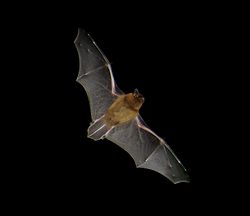We are spending a few days with our son and family near Canterbury where he lives in an 18th century cottage not far from the school where he teaches. In the last few months their home has become an hotel for a colony of tiny pipistrelle bats who have taken up residence under the centuries old tiles on the side of the cottage. A bat expert estimated there are at least 300 living there.
This evening, as the light faded, we watched as they flew out from what appeared like impossibly small gaps in the tiles. Bats are a protected species, so they are not allowed to get rid of them, but apart from their tiny droppings they are not a nuisance. It was quite amazing watching them fly off for food this evening.

Hi Roger,
ReplyDeleteIf you have a PC with a decent sound card available. Try down-converting and listening for them.
I think spectrum lab has a preset for this purpose.
Regards,
Martin - G8JNJ
Or build your own portable bat detector. It makes it so much easier to spot them and follow them.
ReplyDeleteI have a commercial one with both heterodyne and down conversion. Heterodyning, i.e. down-conversion, is by far the most useful mode in my experience. There are lots of DIY sites on the internet for such detectors.
Sverre/LA3ZA
I meant to say that my bat detector has heterodyne and frequency division and my previous comment, and that the heteordyne mode is the preferred one.
ReplyDeleteAs it just so happens I live a few miles north of Canterbury (Whitstable) and I often down
ReplyDeletethe beach.
Only a few nights ago as dusk was dawning and
I was sitting on the grass slopes when
I spotted several bats circling not far from
my head. Obviously getting their soundings
before heading off into the night ;-)
73 de Andy G0FTD
Be careful with bats, they are probably the biggest reservoir/vector for human pathogens on earth.
ReplyDeleteI Know Roger - He'll build an XBM40kHz! Ultrasonic Transducer, bc109 and a crystal and hetrodyne it up to 80m
ReplyDeleteMost bats emit chirps which require much more bandwidth than the standard SSB receiver, so most 80 m receivers won't be any good for a bat detector.
ReplyDeleteSverre/LA3ZA